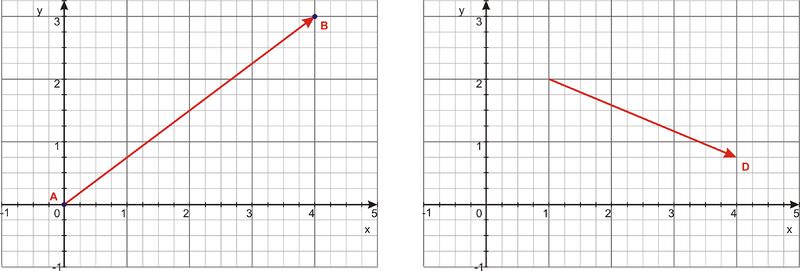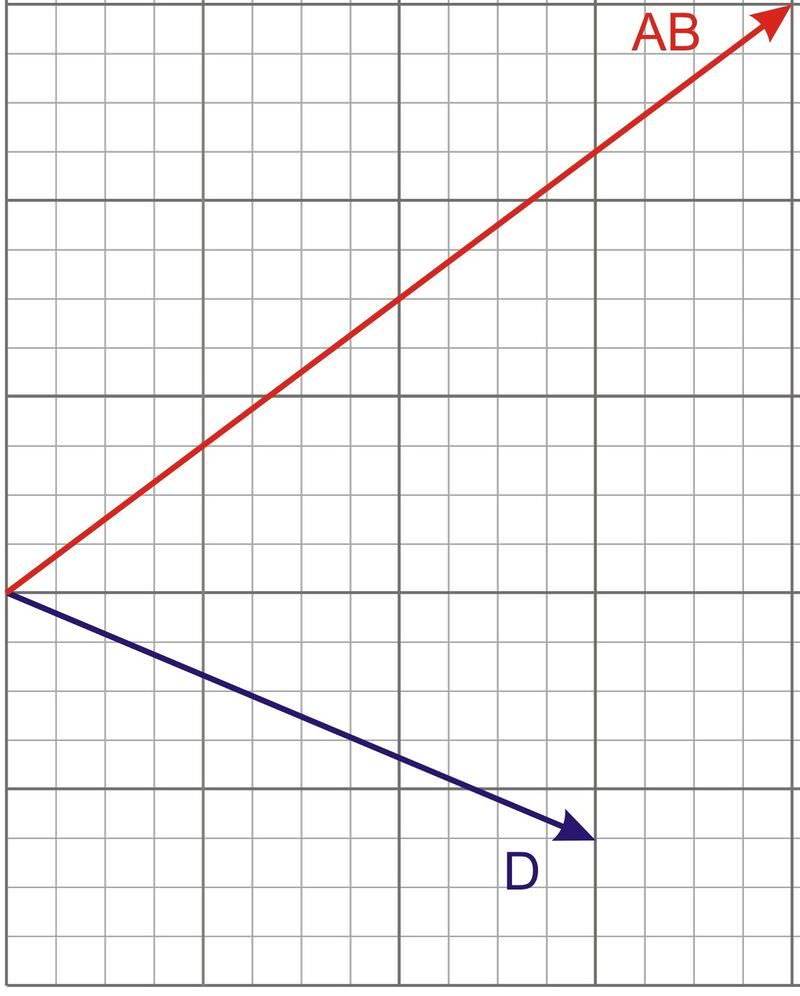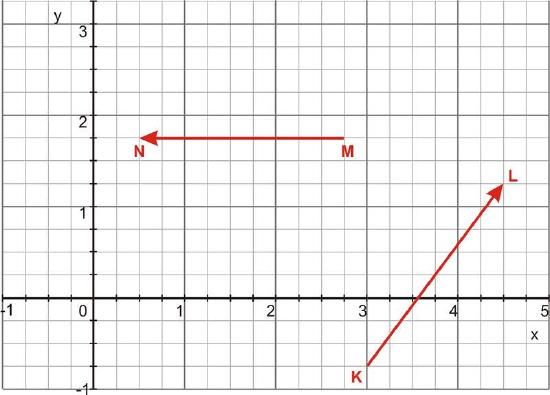5.2.2: Scalar Projections
- Page ID
- 14663
\( \newcommand{\vecs}[1]{\overset { \scriptstyle \rightharpoonup} {\mathbf{#1}} } \)
\( \newcommand{\vecd}[1]{\overset{-\!-\!\rightharpoonup}{\vphantom{a}\smash {#1}}} \)
\( \newcommand{\dsum}{\displaystyle\sum\limits} \)
\( \newcommand{\dint}{\displaystyle\int\limits} \)
\( \newcommand{\dlim}{\displaystyle\lim\limits} \)
\( \newcommand{\id}{\mathrm{id}}\) \( \newcommand{\Span}{\mathrm{span}}\)
( \newcommand{\kernel}{\mathrm{null}\,}\) \( \newcommand{\range}{\mathrm{range}\,}\)
\( \newcommand{\RealPart}{\mathrm{Re}}\) \( \newcommand{\ImaginaryPart}{\mathrm{Im}}\)
\( \newcommand{\Argument}{\mathrm{Arg}}\) \( \newcommand{\norm}[1]{\| #1 \|}\)
\( \newcommand{\inner}[2]{\langle #1, #2 \rangle}\)
\( \newcommand{\Span}{\mathrm{span}}\)
\( \newcommand{\id}{\mathrm{id}}\)
\( \newcommand{\Span}{\mathrm{span}}\)
\( \newcommand{\kernel}{\mathrm{null}\,}\)
\( \newcommand{\range}{\mathrm{range}\,}\)
\( \newcommand{\RealPart}{\mathrm{Re}}\)
\( \newcommand{\ImaginaryPart}{\mathrm{Im}}\)
\( \newcommand{\Argument}{\mathrm{Arg}}\)
\( \newcommand{\norm}[1]{\| #1 \|}\)
\( \newcommand{\inner}[2]{\langle #1, #2 \rangle}\)
\( \newcommand{\Span}{\mathrm{span}}\) \( \newcommand{\AA}{\unicode[.8,0]{x212B}}\)
\( \newcommand{\vectorA}[1]{\vec{#1}} % arrow\)
\( \newcommand{\vectorAt}[1]{\vec{\text{#1}}} % arrow\)
\( \newcommand{\vectorB}[1]{\overset { \scriptstyle \rightharpoonup} {\mathbf{#1}} } \)
\( \newcommand{\vectorC}[1]{\textbf{#1}} \)
\( \newcommand{\vectorD}[1]{\overrightarrow{#1}} \)
\( \newcommand{\vectorDt}[1]{\overrightarrow{\text{#1}}} \)
\( \newcommand{\vectE}[1]{\overset{-\!-\!\rightharpoonup}{\vphantom{a}\smash{\mathbf {#1}}}} \)
\( \newcommand{\vecs}[1]{\overset { \scriptstyle \rightharpoonup} {\mathbf{#1}} } \)
\( \newcommand{\vecd}[1]{\overset{-\!-\!\rightharpoonup}{\vphantom{a}\smash {#1}}} \)
\(\newcommand{\avec}{\mathbf a}\) \(\newcommand{\bvec}{\mathbf b}\) \(\newcommand{\cvec}{\mathbf c}\) \(\newcommand{\dvec}{\mathbf d}\) \(\newcommand{\dtil}{\widetilde{\mathbf d}}\) \(\newcommand{\evec}{\mathbf e}\) \(\newcommand{\fvec}{\mathbf f}\) \(\newcommand{\nvec}{\mathbf n}\) \(\newcommand{\pvec}{\mathbf p}\) \(\newcommand{\qvec}{\mathbf q}\) \(\newcommand{\svec}{\mathbf s}\) \(\newcommand{\tvec}{\mathbf t}\) \(\newcommand{\uvec}{\mathbf u}\) \(\newcommand{\vvec}{\mathbf v}\) \(\newcommand{\wvec}{\mathbf w}\) \(\newcommand{\xvec}{\mathbf x}\) \(\newcommand{\yvec}{\mathbf y}\) \(\newcommand{\zvec}{\mathbf z}\) \(\newcommand{\rvec}{\mathbf r}\) \(\newcommand{\mvec}{\mathbf m}\) \(\newcommand{\zerovec}{\mathbf 0}\) \(\newcommand{\onevec}{\mathbf 1}\) \(\newcommand{\real}{\mathbb R}\) \(\newcommand{\twovec}[2]{\left[\begin{array}{r}#1 \\ #2 \end{array}\right]}\) \(\newcommand{\ctwovec}[2]{\left[\begin{array}{c}#1 \\ #2 \end{array}\right]}\) \(\newcommand{\threevec}[3]{\left[\begin{array}{r}#1 \\ #2 \\ #3 \end{array}\right]}\) \(\newcommand{\cthreevec}[3]{\left[\begin{array}{c}#1 \\ #2 \\ #3 \end{array}\right]}\) \(\newcommand{\fourvec}[4]{\left[\begin{array}{r}#1 \\ #2 \\ #3 \\ #4 \end{array}\right]}\) \(\newcommand{\cfourvec}[4]{\left[\begin{array}{c}#1 \\ #2 \\ #3 \\ #4 \end{array}\right]}\) \(\newcommand{\fivevec}[5]{\left[\begin{array}{r}#1 \\ #2 \\ #3 \\ #4 \\ #5 \\ \end{array}\right]}\) \(\newcommand{\cfivevec}[5]{\left[\begin{array}{c}#1 \\ #2 \\ #3 \\ #4 \\ #5 \\ \end{array}\right]}\) \(\newcommand{\mattwo}[4]{\left[\begin{array}{rr}#1 \amp #2 \\ #3 \amp #4 \\ \end{array}\right]}\) \(\newcommand{\laspan}[1]{\text{Span}\{#1\}}\) \(\newcommand{\bcal}{\cal B}\) \(\newcommand{\ccal}{\cal C}\) \(\newcommand{\scal}{\cal S}\) \(\newcommand{\wcal}{\cal W}\) \(\newcommand{\ecal}{\cal E}\) \(\newcommand{\coords}[2]{\left\{#1\right\}_{#2}}\) \(\newcommand{\gray}[1]{\color{gray}{#1}}\) \(\newcommand{\lgray}[1]{\color{lightgray}{#1}}\) \(\newcommand{\rank}{\operatorname{rank}}\) \(\newcommand{\row}{\text{Row}}\) \(\newcommand{\col}{\text{Col}}\) \(\renewcommand{\row}{\text{Row}}\) \(\newcommand{\nul}{\text{Nul}}\) \(\newcommand{\var}{\text{Var}}\) \(\newcommand{\corr}{\text{corr}}\) \(\newcommand{\len}[1]{\left|#1\right|}\) \(\newcommand{\bbar}{\overline{\bvec}}\) \(\newcommand{\bhat}{\widehat{\bvec}}\) \(\newcommand{\bperp}{\bvec^\perp}\) \(\newcommand{\xhat}{\widehat{\xvec}}\) \(\newcommand{\vhat}{\widehat{\vvec}}\) \(\newcommand{\uhat}{\widehat{\uvec}}\) \(\newcommand{\what}{\widehat{\wvec}}\) \(\newcommand{\Sighat}{\widehat{\Sigma}}\) \(\newcommand{\lt}{<}\) \(\newcommand{\gt}{>}\) \(\newcommand{\amp}{&}\) \(\definecolor{fillinmathshade}{gray}{0.9}\)Scalar Projections
As an engineer, or a pilot, or racecar driver, or even a chef, it can often be useful to determine the result of different amounts and directions of force applied to a particular action to decide on the best use of added strength, altitude, speed, or heat in order to achieve the optimum result.
This lesson is about scalar projections, which allow you to do the things above and a whole host of others.
Scalar Projections
A scalar projection allows you to investigate the result of different "lengths" of one vector on an overall study. The projection of a vector onto a particular direction is, in effect, the result of applying a specific value in that direction. Recall that the dot product of a vector is a scalar quantity describing only the magnitude of a particular vector. A scalar projection is given by the dot product of a vector with a unit vector for that direction.
For example, the component notations for the vectors shown below are AB=⟨4,3⟩ and D=⟨3,−1.25⟩.

The scalar projection of vector AB onto \(\ \hat{x}\) is given by
\(\ \overrightarrow{A B} \times \hat{x}=(4 \cdot 1)+(3 \cdot 0)+(0 \cdot 0)=4\)
The scalar projection of vector AB onto \(\ \hat{y}\) is given by
\(\ \overrightarrow{A B} \times \hat{y}=(4 \cdot 0)+(3 \cdot 1)+(0 \cdot 0)=3\)
And the scalar projection of vector AB onto \(\ \hat{z}\) is given by
\(\ \overrightarrow{A B} \times \hat{z}=(4 \cdot 0)+(3 \cdot 0)+(0 \cdot 1)=0\)
The scalar projections of AB onto the x and y directions are non-zero numbers because the vector is located in the x-y plane. The scalar projection of AB onto the z direction is equal to zero, because the z direction is perpendicular to AB.
Vector Projections
The vector projection of a vector onto a given direction has a magnitude equal to the scalar projection. The direction of the vector projection is the same as the unit vector of that given direction. Recall that when a vector \(\ \vec{v}\) is multiplied by a scalar s, its components are given by
\(\ \overrightarrow{s v}=\left\langle s v_{x}, s v_{y}, s v_{z}\right\rangle\)
To calculate the vector projection of AB onto the direction of vector D, use the scalar projection calculated in the previous example and the unit vector \(\ \vec{D}\).
\(\ (\overrightarrow{A B} \times \vec{D}) \vec{D}=\langle(1.23 \cdot 0.923),(1.23 \cdot-0.385)\rangle=\langle 1.135,-0.474\rangle\)
Examples
The diagram below shows both vectors AB and D together on the same grid. Determine the scalar projection of vector AB onto the direction of vector D.
Solution
To find the scalar projection onto the direction of another vector we need to know the unit vector in the direction of vector D.
First, the components of \(\ \vec{D}\) are
\(\ \vec{D}=\langle 3,-1.25\rangle\)
Now the magnitude of \(\ \vec{D}\) is
\(\ |D|=\sqrt{\left(D_{x}\right)^{2}+\left(D_{y}\right)^{2}}=\sqrt{3^{2}+(-1.25)^{2}}=\sqrt{9+1.5625}=\sqrt{10.5625}=3.25\)
Finally, the direction vector of \(\ \vec{D}\) is
\(\ \begin{array}{l}
\vec{D}=\frac{\vec{D}}{|D|}=\frac{3 \hat{x}+(-1.25) \hat{y}}{3.25}=\frac{3}{3.25} \hat{x}+\frac{-1.25}{3.25} \hat{y} \\
\vec{D}=\langle 0.923,-0.385\rangle
\end{array}\)
Now we can use the dot-product to calculate the scalar projection of AB onto the direction of vector D.
\(\ \overrightarrow{A B} \times \vec{D}=(3 \cdot 0.923)+(4 \cdot-0.385)+(0 \cdot 0)=2.769+(-1.54)=1.23\)

Determine the scalar projection of the vector \(\ \vec{R}=\langle 27,39,52\rangle\) onto the direction of \(\ \vec{T}=\langle 44,26,17\rangle\).
Solution
The scalar projection of one vector onto the direction of the other is the dot product of the first vector with the unit vector representing the direction of the second vector. To calculate the scalar projection, we need to determine the unit vector in the direction of vector \(\ \vec{T}=\langle 44,26,17\rangle\). Remember that a unit vector is equal to the ratio of the vector and its magnitude, therefore we first need to calculate the length of vector \(\ \vec{T}\)
\(\ \begin{array}{l}
|\vec{T}|=\sqrt{T_{x}^{2}+T_{y}^{2}+T_{z}^{2}}=\sqrt{(44)^{2}+(26)^{2}+(17)^{2}}=\sqrt{1936+676+289} \\
=\sqrt{2901}=53.86 \\
\vec{T}=\frac{\vec{T}}{|\vec{T}|}=\frac{\langle 44,26,17\rangle}{53.86}=\left\langle\frac{44}{53.86}, \frac{26}{53.86}, \frac{17}{53.86}\right\rangle=\langle 0.8169,0.4827,0.3156\rangle
\end{array}\)
Now we can calculate the scalar projection of \(\ \vec{R}\) onto \(\ \vec{T} \) by calculating the dot product
\(\ \begin{array}{l}
\vec{R} \times \vec{T}=(27 \cdot 0.8169)+(39 \cdot 0.4827)+(52 \cdot 0.3156)=22.0563+18.6253
+16.4112=57.0928
\end{array}\)
Determine the vector projection of \(\ \vec{A}\) onto the direction of \(\ \vec{B}\) and the vector projection of \(\ \vec{B}\) onto the direction of \(\ \vec{A} \cdot \vec{A}=7 c m \ @\ 0^{\circ}\) and \(\ \vec{B}=4 c m\ @\ -22^{\circ}\).

Solution
The vector projection of one vector onto the direction of another vector is given by \(\ (\vec{A} \times \vec{B}) \vec{B}\), where \(\ \vec{B}\) is the unit vector in the direction of \(\ \vec{B}\). Since it is a unit vector \(\ \vec{B}\) has a magnitude of 1 and has the same direction as \(\ \vec{B}, \vec{B}=1\ @\ -22^{\circ}\). Therefore, \(\ (\vec{A} \times \vec{B}) \vec{B}=(|\vec{A} \| \vec{B}| \cos \theta) \vec{B}=((7)(1) \cos 22)\ @\ -22^{\circ}=6.49\ @\ -22^{\circ}\)
The vector projection of one vector onto the direction of another vector is given by \(\ (\vec{B} \times \vec{A}) \vec{A}\), where \(\ \vec{A}\) is the unit vector in the direction of \(\ \vec{A}\). Since it is a unit vector \(\ \vec{A}\) has a magnitude of 1 and has the same direction as \(\ \vec{A}, \vec{A}=1\ @\ 0^{\circ}\). Therefore, \(\ (\vec{B} \times \vec{A}) \vec{A}=(|\vec{B}||\vec{A}| \cos \theta) \vec{A}=((4)(1) \cos 22)\ @\ 0^{\circ}=3.71\ @\ 0^{\circ}\)
Determine the vector projection of vector \(\ \overrightarrow{M N}\) onto the vector \(\ \overrightarrow{K L}\).

Solution
The vector progression of one vector onto a second vector is the multiplication of the dot products of the two vectors and the unit vector defining the direction of the second vector. In this case, \(\ (\overrightarrow{M N} \times \overrightarrow{K L}) \overrightarrow{K L}\). First we need to identify the components of the two vectors by using the information given on the graph. In this case, \(\ \overrightarrow{M N}=\langle-2.25,0.0\rangle\) and \(\ \overrightarrow{K L}=\langle 1.5,2,0\rangle\). Then we need to determine the dot product of the two vectors.
\(\ \begin{array}{l}
\overrightarrow{M N} \times \overrightarrow{K L}=(M N)_{x}(K L)_{x}+(M N)_{y}(K L)_{y}+(M N)_{z}(K L)_{z} \\
=(2.25)(1.5)+(2)(0)+(0)(0)=3.375
\end{array}\)
We also need to determine the unit vector in the direction of \(\ \overrightarrow{K L}\). Remember that a unit vector is equal to the ratio of the vector and its magnitude, therefore we first need to calculate the length of vector \(\ \overrightarrow{K L}\).
\(\ \begin{array}{l}
|\overrightarrow{K L}|=\sqrt{(K L)_{x}^{2}+(K L)_{y}^{2}+(K L)_{z}^{2}}=\sqrt{(1.5)^{2}+(2)^{2}+(0)^{2}}=\sqrt{2.25+4+0} \\
=\sqrt{6.25}=2.5 \\
\overrightarrow{K L}=\frac{\overrightarrow{K L}}{|\overrightarrow{K L}|}=\frac{\langle 1.5,2.0,0\rangle}{2.5}=\left\langle\frac{1.5}{2.5}, \frac{2}{2.5}, \frac{0}{2.5}\right\rangle=\langle 0.6,0.8,0\rangle
\end{array}\)
Lastly, we multiply the dot product of the two vectors by this unit vector,
\(\ (\overrightarrow{M N} \times \overrightarrow{K L}) \overrightarrow{K L}=(3.375)\langle 0.6,0.8,0\rangle=\langle 2.025,2.7,0\rangle\)
Review
- Calculate the result of a scalar multiple of 6 on the vector \(\ \langle 1,19\rangle\)
- Calculate the result of a scalar multiple of (-8) on the vector \(\ \langle 7,8\rangle\)
- Calculate the result of a scalar multiple of 15 on the vector \(\ \langle-7,3\rangle\)
- Calculate the result of a scalar multiple of (-11) on the vector \(\ \langle-9,20\rangle\)
- Calculate the result of a scalar multiple of 16 on the vector \(\ \langle 9,10\rangle\)
- Given Vector \(\ A=\langle-4,6\rangle\) and Vector \(\ B=\langle 9,15\rangle\). What is the projection of A onto B?
- What is the projection of \(\ \langle 2,10\rangle\) onto \(\ \langle 1,3\rangle\)?
- Given Vector \(\ C=\langle 1,2\rangle\) and Vector \(\ D=\langle 1,11\rangle\). What is the projection of C onto D?
- Given Vector \(\ E=\langle-5,3\rangle\) and Vector \(\ F=\langle-1,18\rangle\). What is the projection of E onto F?
- What is the projection of \(\ \langle-2,1\rangle\) onto \(\ \langle-5,6\rangle\)?
- Given Vector \(\ \mathrm{H}=\langle 8 i+11 j\rangle\) and Vector \(\ I=\langle-2 i+15 j\rangle\) What is the projection of H onto I?
- What is the projection of \(\ \langle-1,6\rangle\) onto \(\ \langle 8,16\rangle\)?
- What is the projection of \(\ \langle-1,8\rangle\) onto \(\ \langle 7,8\rangle\)?
- Given Vector \(\ \mathrm{J}=\langle-4 i+8 j\rangle\) and Vector \(\ K=\langle-8 i+10 j\rangle\). What is the projection of J onto K?
- Given Vector \(\ L=\langle-4,3\rangle\) and Vector \(\ M=\langle 7,17\rangle\). What is the projection of L onto M?
Vocabulary
| Term | Definition |
|---|---|
| dot product | The dot product is also known as inner product or scalar product. The two forms of the dot product are \(\ \vec{a} \cdot \vec{b}=\|\vec{a}\|\|\vec{b}\| \cos \theta \text { and } \vec{a} \cdot \vec{b}=x_{a} x_{b}+y_{a} y_{b}\). |
| scalar projection | The scalar projection of a vector onto another vector is equal to the length of the projection of the first vector onto the second vector. |
| unit vector | A unit vector is a vector with a magnitude of one. |
Image Attributions
- [Figure 1]
Credit: CK-12 Foundation
Source: https://commons.wikimedia.org/wiki/File:Prototype_Pontiac_race_car.jpg
License: CC BY-SA

